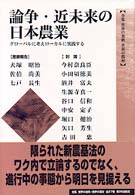Full Description
Through a series of detailed film case histories ranging from The Great Dictator to Hiroshima mon amour to The Lives of Others, The Aesthetics of Antifascist Film: Radical Projection explores the genesis and recurrence of antifascist aesthetics as it manifests in the WWII, Cold War and Post-Wall historical periods.
Emerging during a critical moment in film history—1930s/1940s Hollywood— cinematic antifascism was representative of the international nature of antifascist alliances, with the amalgam of film styles generated in émigré Hollywood during the WWII period reflecting a dialogue between an urgent political commitment to antifascism and an equally intense commitment to aesthetic complexity. Opposed to a fascist aesthetics based on homogeneity, purity and spectacle, these antifascist films project a radical beauty of distortion, heterogeneity, fragmentation and loss. By juxtaposing documentation and the modernist techniques of surrealism and expressionism, the filmmakers were able to manifest a non-totalizing work of art that still had political impact.
Drawing on insights from film and cultural studies, aesthetic and ethical philosophy, and socio-political theory, this book argues that the artistic struggles with political commitment and modernist strategies of representation during the 1930s and 40s resulted in a distinctive, radical aesthetic form that represents an alternate strand of post-modernism.
Contents
1. Introduction: Face-to-Face with the Angel of History I. Murderers Among Us: WWII, Antifascism and Film 2. The Swastika World and the Aesthetics of Resistance 3. Radical Projection 4. Great Dictators 5. Paranoia and Pedagogy II. Global Exiles During the Cold War 6. Radical Beauty 7. Forbidden Games 8. Perversion and Pervasion 9. Radical Transmissions






